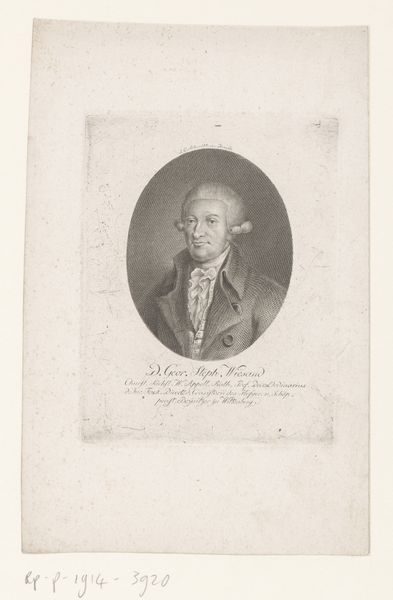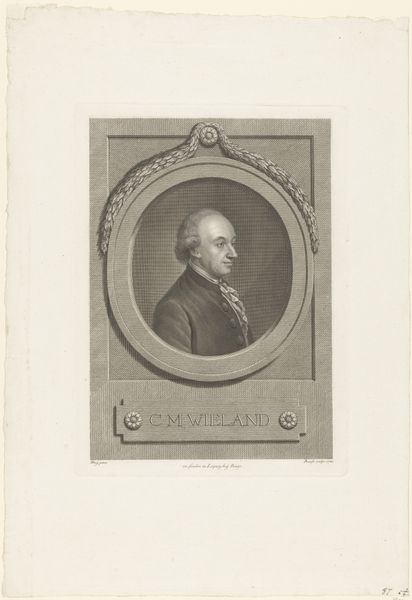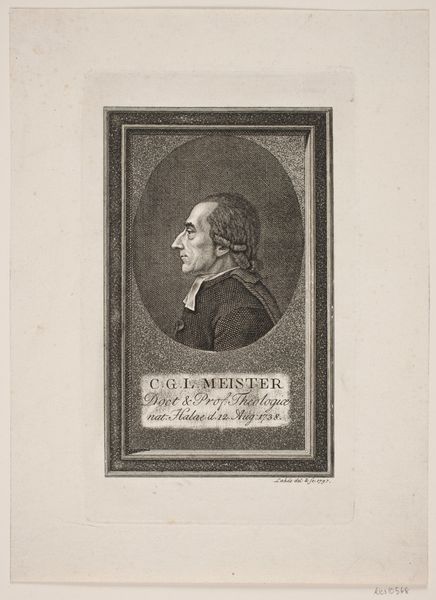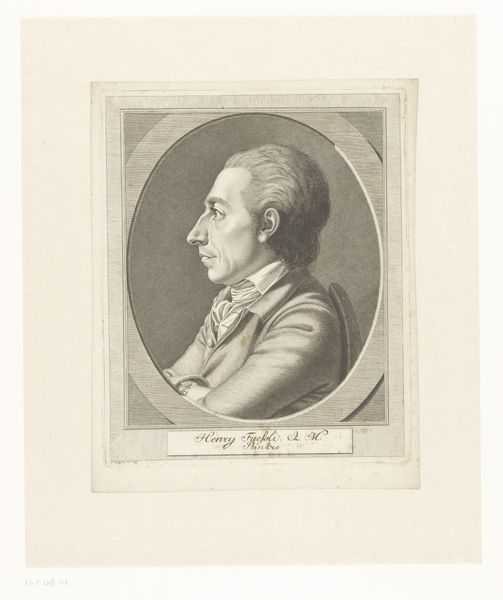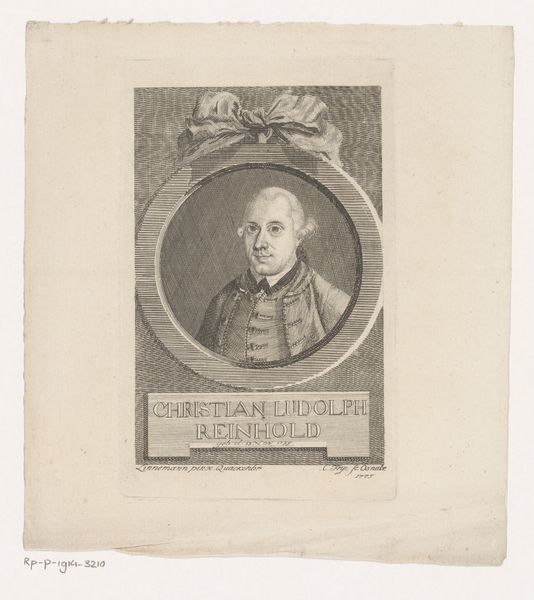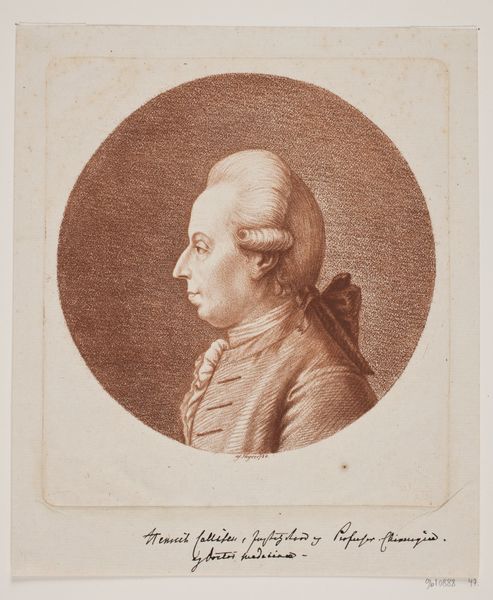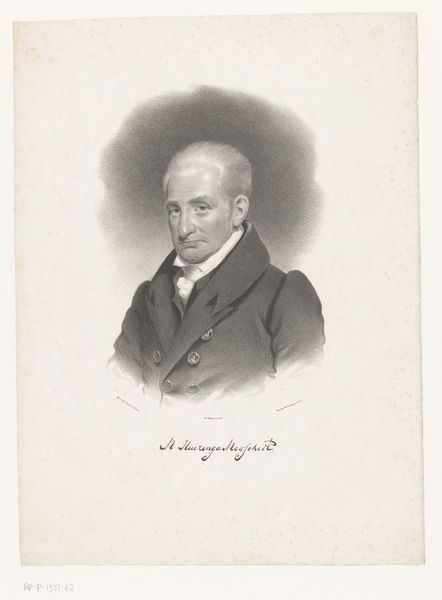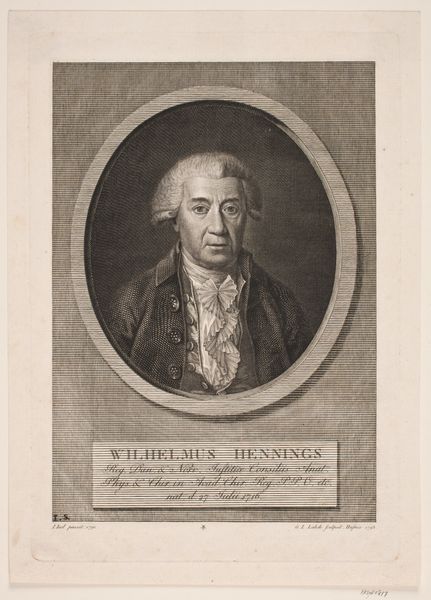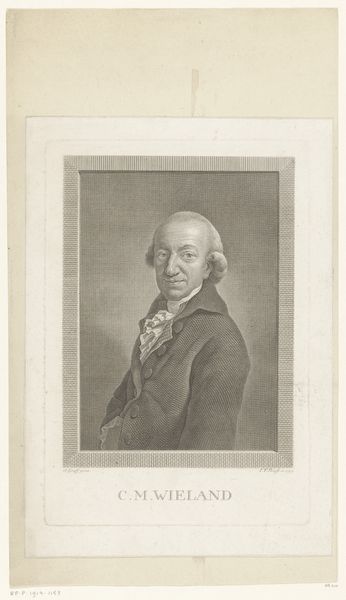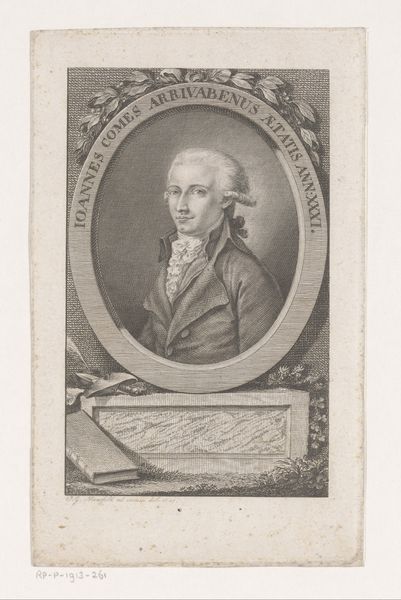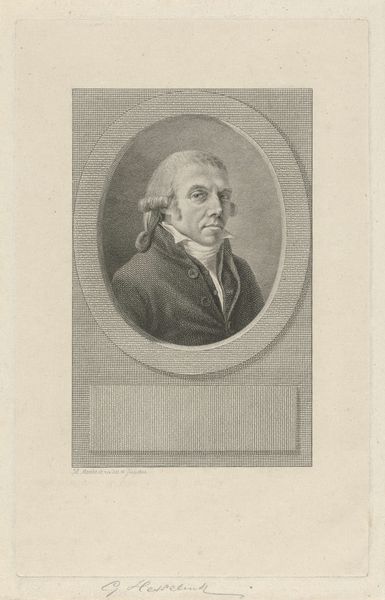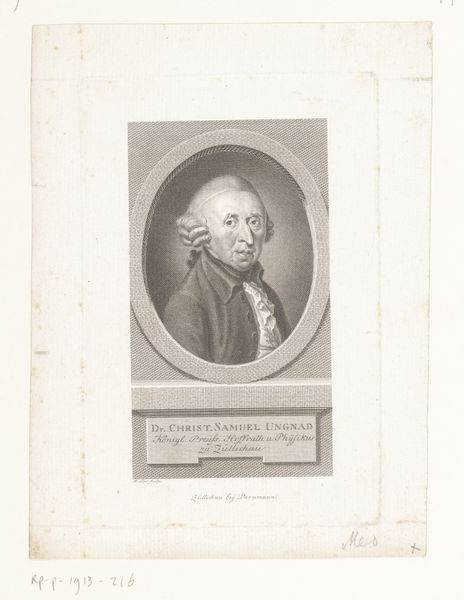
print, mezzotint, graphite, engraving
#
portrait
#
neoclassicism
# print
#
mezzotint
#
graphite
#
engraving
Dimensions: 344 mm (height) x 250 mm (width) (plademaal)
Curator: Looking at this 19th-century print, I’m struck by the sitter’s austere expression. He seems a man of duty, but there's also a hint of melancholy, don’t you think? Editor: Absolutely. It’s quite subdued in its tones and composition. Before we delve too deeply into that though, can you provide us with more details about it? Curator: Certainly. What we’re observing is an engraving of "Søofficer J. C. Schrødersee," currently residing at the Statens Museum for Kunst. This print is composed using graphite and executed with mezzotint and engraving techniques. A powerful and rare combination. Editor: Fascinating that they combined all of those different printing methods into one single composition. Schrødersee looks every bit the man of the Enlightenment ideal, his gaze sharp, profile presented like a Roman emperor's bust. Given its style and his military bearing, I assume there's more to say about the image's symbolism. Curator: He held significant posts as a naval officer. I would argue that in rendering him in a Neoclassical style, G. Haas aims to imbue Schrødersee with virtues of duty, honour, and service that were prized at that historical juncture. Editor: I would concur. The formal presentation reinforces that. Though disseminated through printed images like this one, these ideals helped to define a powerful class. Portraits always reflect power dynamics and social positioning. Is there more to unpack here about its time and purpose? Curator: Given his prominence and the precision with which Haas depicted him, this print may have been intended as a commemoration or a circulated portrait, affirming his place in society. As to its symbolic value, the crisp lines and somber tones signal the seriousness of purpose attributed to leaders during that period. It also demonstrates society’s reliance on these idealized portraits of the leaders and thinkers of the day to reaffirm and maintain social order. Editor: It certainly invites deeper reflection. We've only just scratched the surface, but this quick overview offers insights into how individual likenesses convey broader social and cultural meanings. Curator: Agreed. There's so much contained within even what might appear as a simple portrait. The artist’s choice, for instance, speaks volumes of both the person portrayed and the period's values.
Comments
No comments
Be the first to comment and join the conversation on the ultimate creative platform.
